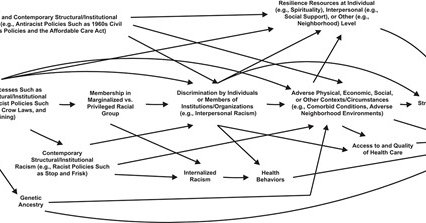
Pablo Knobel
@PabloKnobel
Followers
137
Following
53
Media
1
Statuses
56
Postdoctoral fellow in Environmental Epidemiology
Nueva York, USA
Joined June 2020
Big thanks to Fatai A. Adewuyi, @GognaPriyanka, and Payam Dadvand (from @ISGLOBALorg).
0
0
0
Green prescription could be an essential public health intervention for improving health and well-being in the general population and supplementing conventional medicine while enhancing the sustainability of our healthcare systems in the face of climate change.
1
0
0
Of these 31 studies, 16 reported benefits of green prescriptions on psychological health and well-being, 8 reported benefits on physical activity, 8 reported benefits on cardiometabolic health, and 2 reported benefits on inflammation.
1
0
0
We systematically reviewed the randomized control trial-derived evidence for the health benefits of green prescription. We retrieved 26176 articles and included 31 for review.
1
0
0
📢"Health effects of green prescription: A systematic review of randomized controlled trials" is all set!
1
2
17
The poster awards were filled with bright smiles, loud cheers, and we loved it! The winners were Pablo Knobel, PhD; Rodrigo Ugalde Resano, MD; and Cecilia S. Alcala PhD, MPH. Congratulations! #MexicoExposome
1
6
26
Big thanks to Inhye Hwang, @netwt187g, @perry_sheffield, @louisaholaday, @liuhua_shi, @HereshAmini, Joel Schwartz, and @MaayanY6.
0
0
1
Recognizing specific population groups suffering higher exposure can guide policymakers in creating policies targeted not only to the general reduction of air pollution exposure but also to ameliorating the situation of the most vulnerable population groups.
1
0
1
ZIP codes with higher proportions of Black individuals, lower education, and lower SES had higher levels of PM2.5. Disparities are also present in specific source categories of PM2.5. When comparing US regions, we found more pronounced associations in the West.
1
0
1
Using NMF, we grouped 14 PM2.5 components into 5 source categories: Soil & Crustal Dust; Heavy Fuel Oil & Industrial; Metal Processing Industry & Agricultural; Coal & Oil Combustion & Biomass Burning; and Motor Vehicles.
1
0
1
We aimed to (1) assess the association of ZIP code level socioeconomic and racial characteristics with PM2.5 components grouped by sources, and (2) investigate if these associations are different across US regions.
1
0
0
📢"Socioeconomic and racial disparities in source-apportioned PM2.5 levels across urban areas in the contiguous US, 2010" is out!
3
3
11
Finally reading the systematic review from @MartaBFN (with Lia Campos Suzman @RoserManeja @albert_bach @OriolMarquet @ianguelovski and @PabloKnobel ) on sex/gender♀️♂️ differences in greenspaces🌳-cardiometabolic health❤️🩹 https://t.co/CNuu4L97Dp
1
5
13
We are looking for a new postdoc to join us at @MaayanY6's lab!
Available Post Doc Fellow in Environmental Health @IcahnMountSinai More details 👉 https://t.co/qZ20cqCFGJ
@ISEE_global
@IseeSnrn
#epitwitter #climate #environment #PhD
1
3
4
wondering how to use #DAGs to study racial health disparities? 🤔 check out this important new @AmJEpi article from Chanelle Howe, Zinzi Bailey (@zinzinator), Julia Raifman (@JuliaRaifman), and John Jackson! @societyforepi #socialepi #HealthDisparities
academic.oup.com
Abstract. There have been calls for race to be denounced as a biological variable and for a greater focus on racism, instead of solely race, when studying
2
42
106
Big thanks to @RoserManeja, @albert_bach, @OriolMarquet, and @ianguelovski for always being ready to share their worthy thoughts.
0
0
0
We believe that urban planners and decision-makers can help relieve these differences though tailoring the design and implementation of urban greenness to different socio-cultural needs and preferences.
1
0
1
(2) Despite our methodological concerns, our findings suggest that urban greenness has more potential for improving women/females' mental health but they are less likely to use them.
1
0
1
(1) Sex and gender are commonly misused: mixing and matching gender with biological dimensions and sex with social dimensions. This raises questions about results interpretability and, further down, potential sex and gender bias.
1
0
0
We aimed to answer two questions: (1) How are gender and sex used in the literature on the association between urban green and mental health? and (2) Does urban greenness unequally distribute mental health benefits in women/females compared to men/males?
1
0
0





